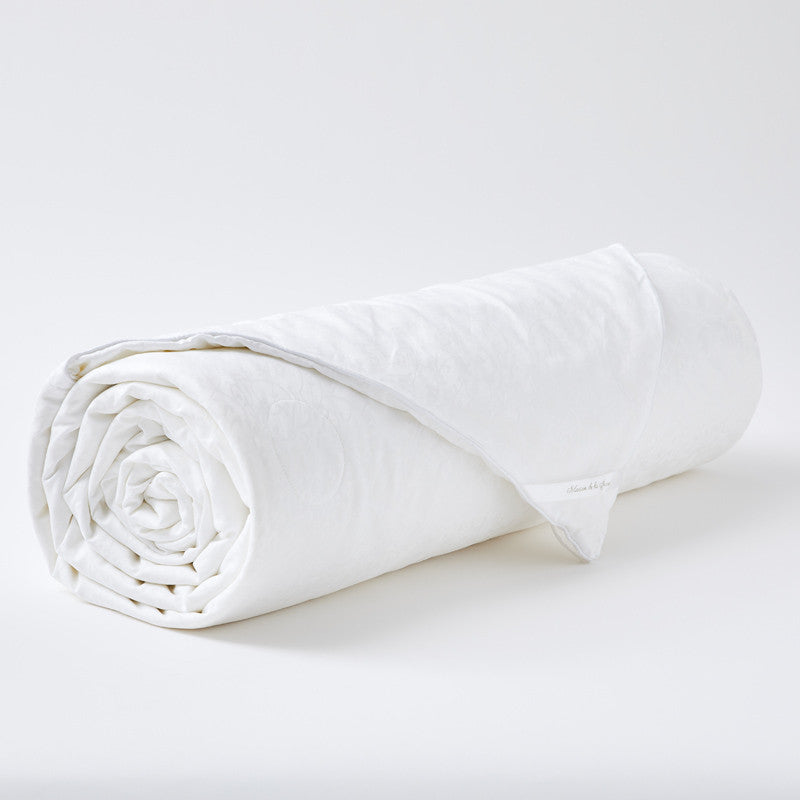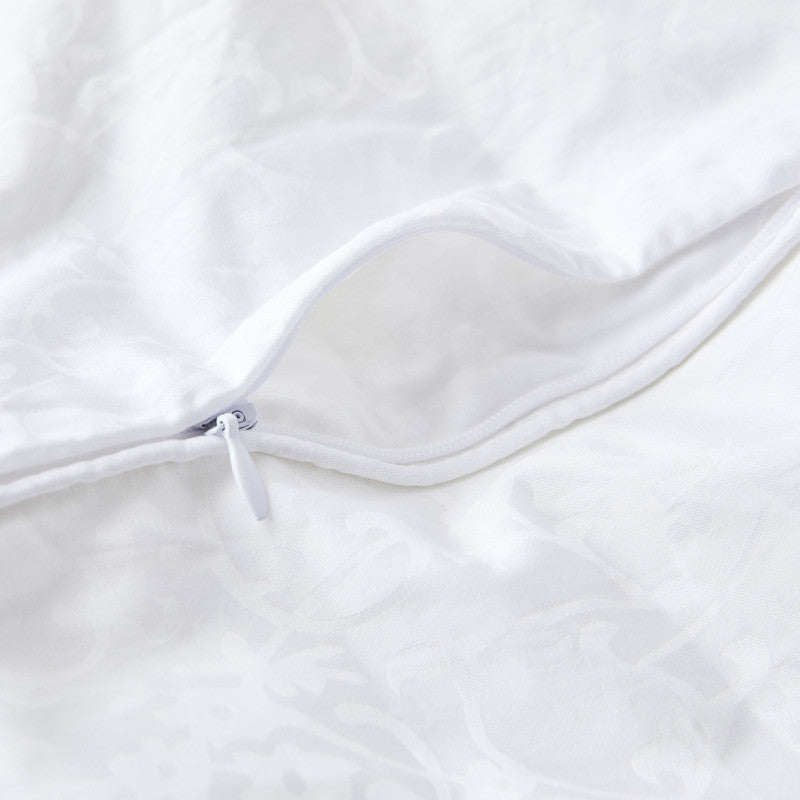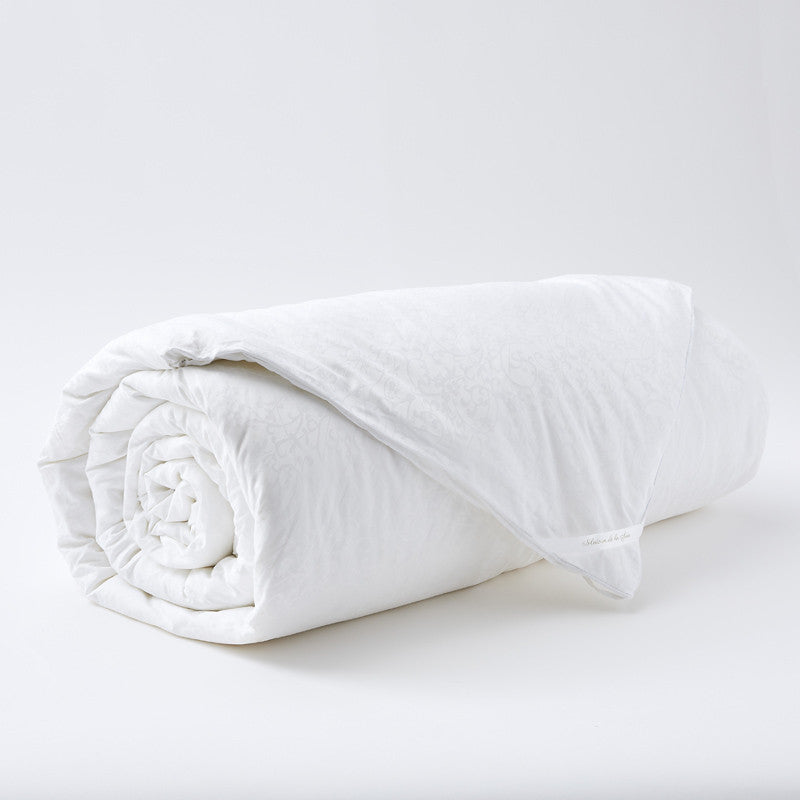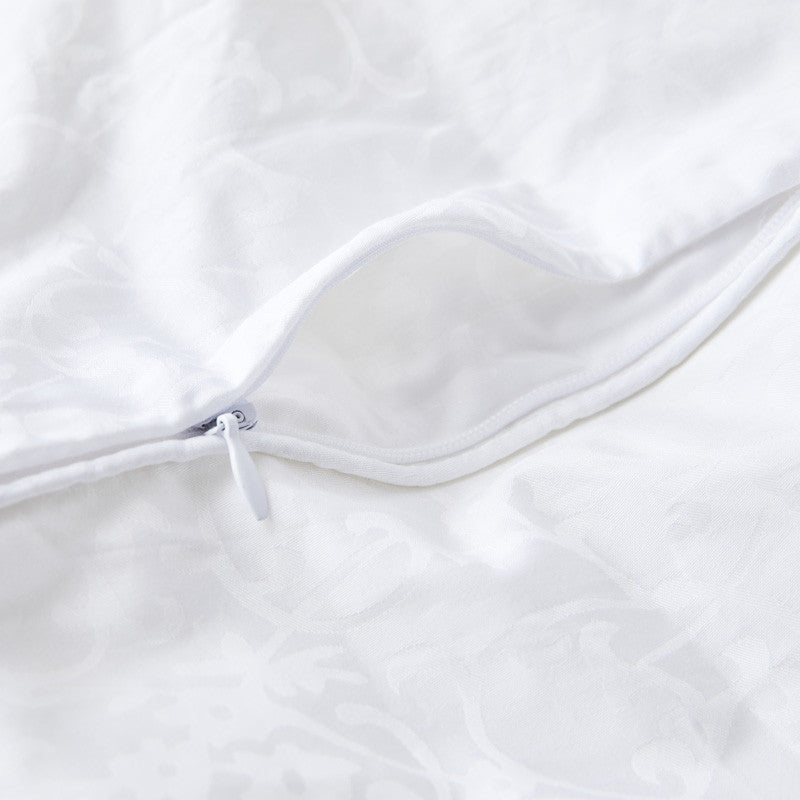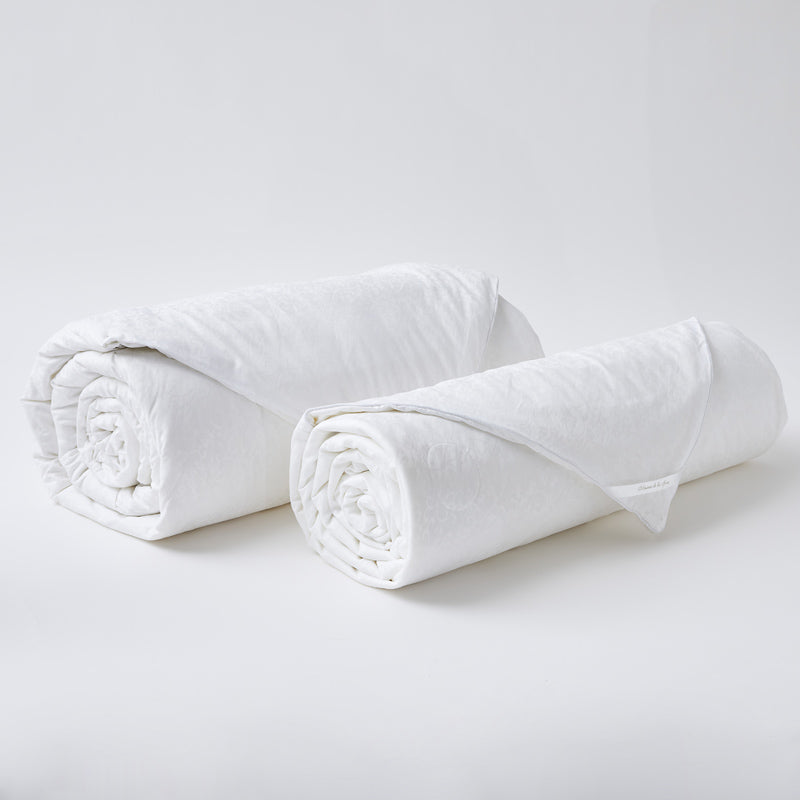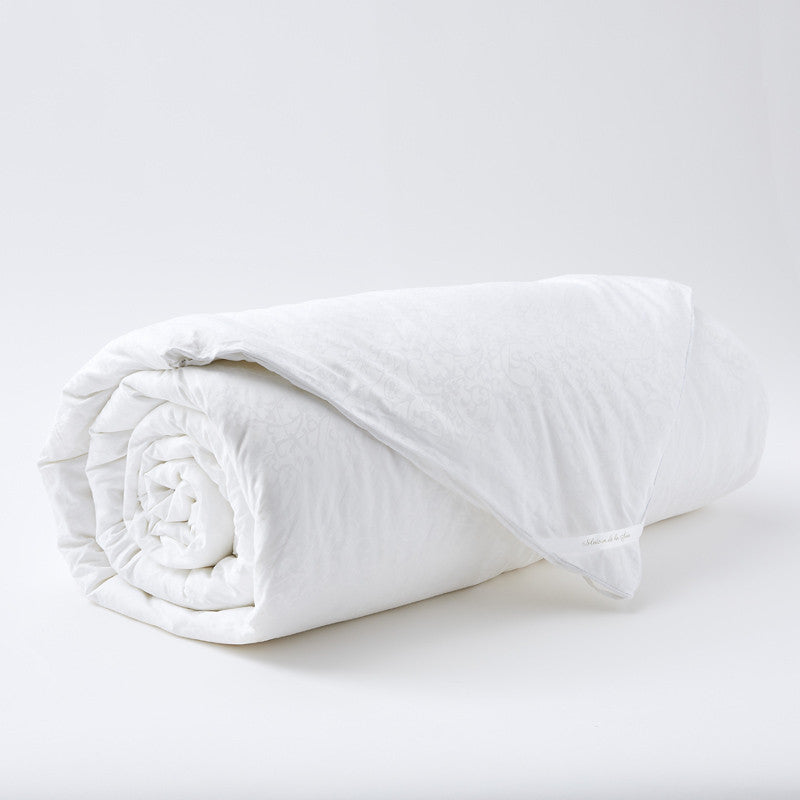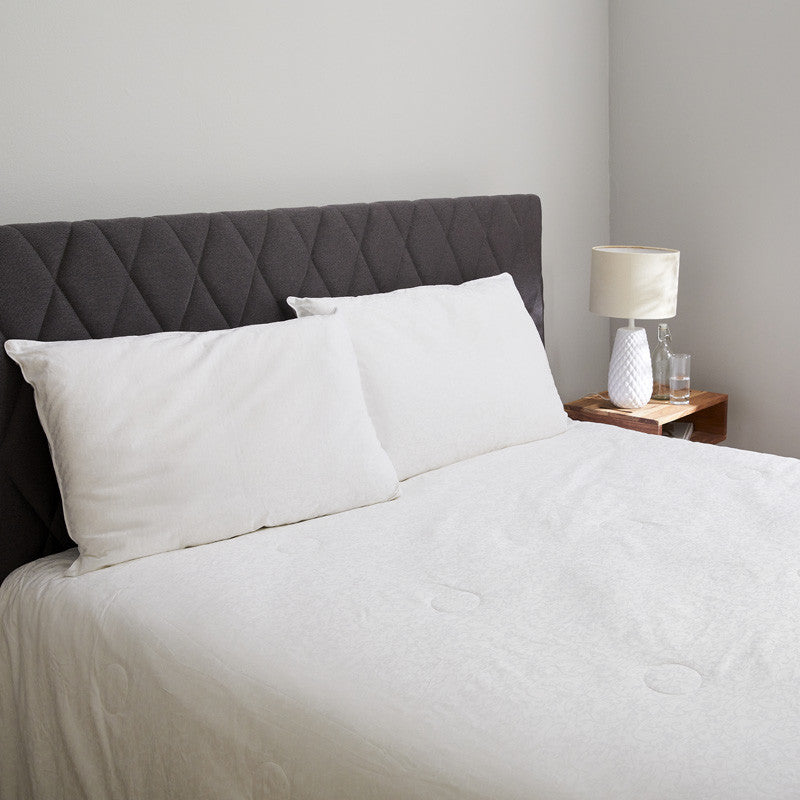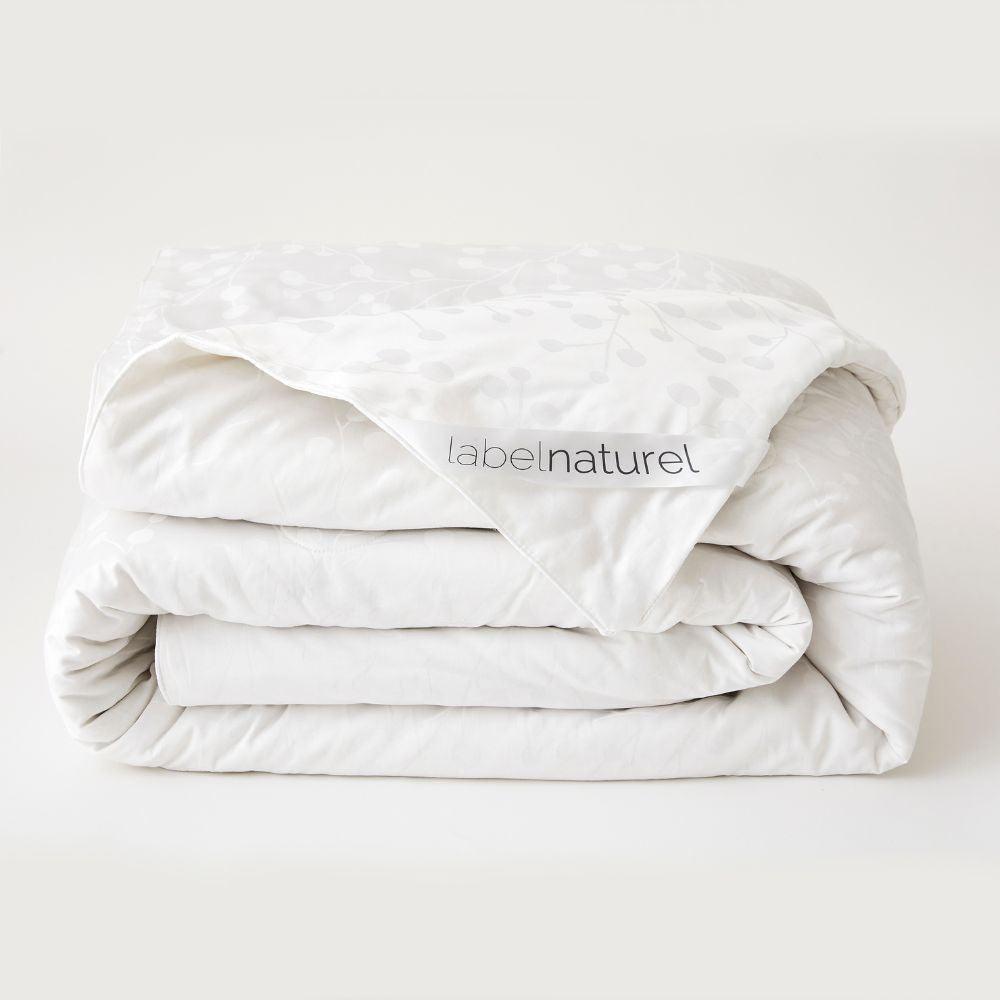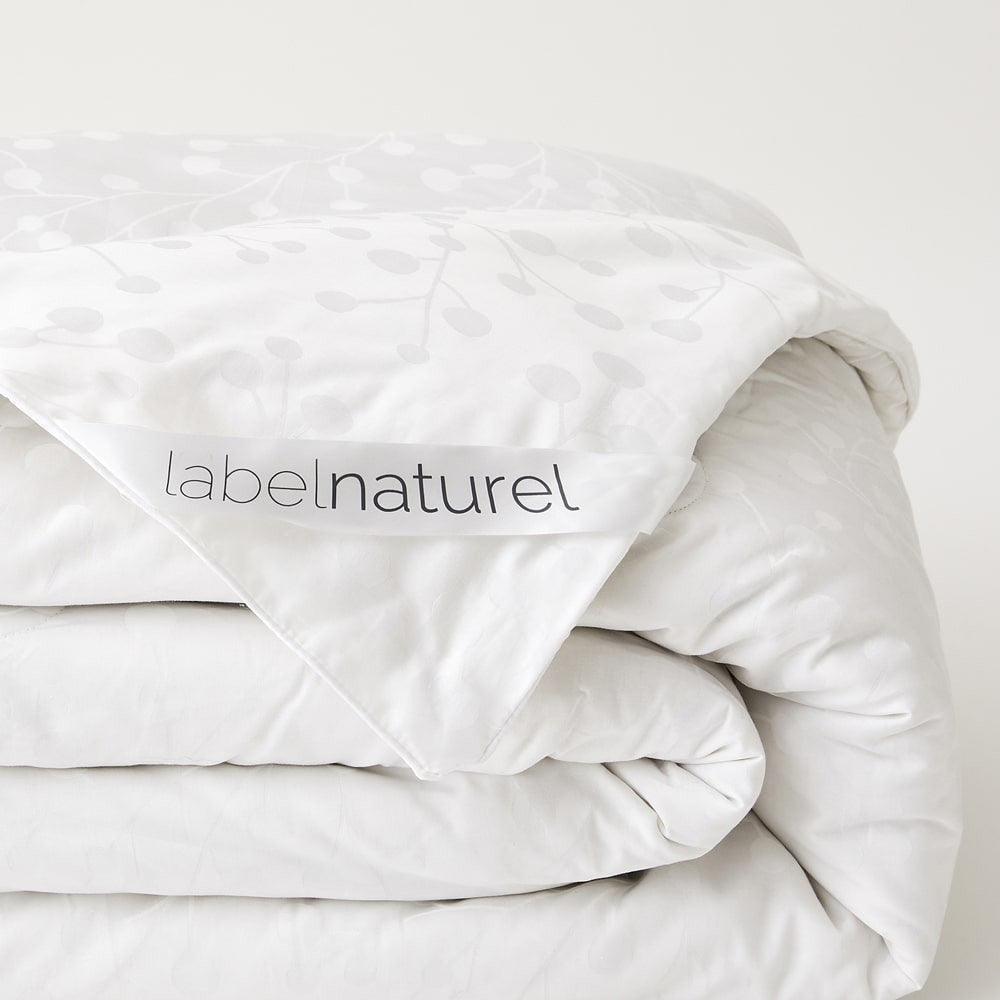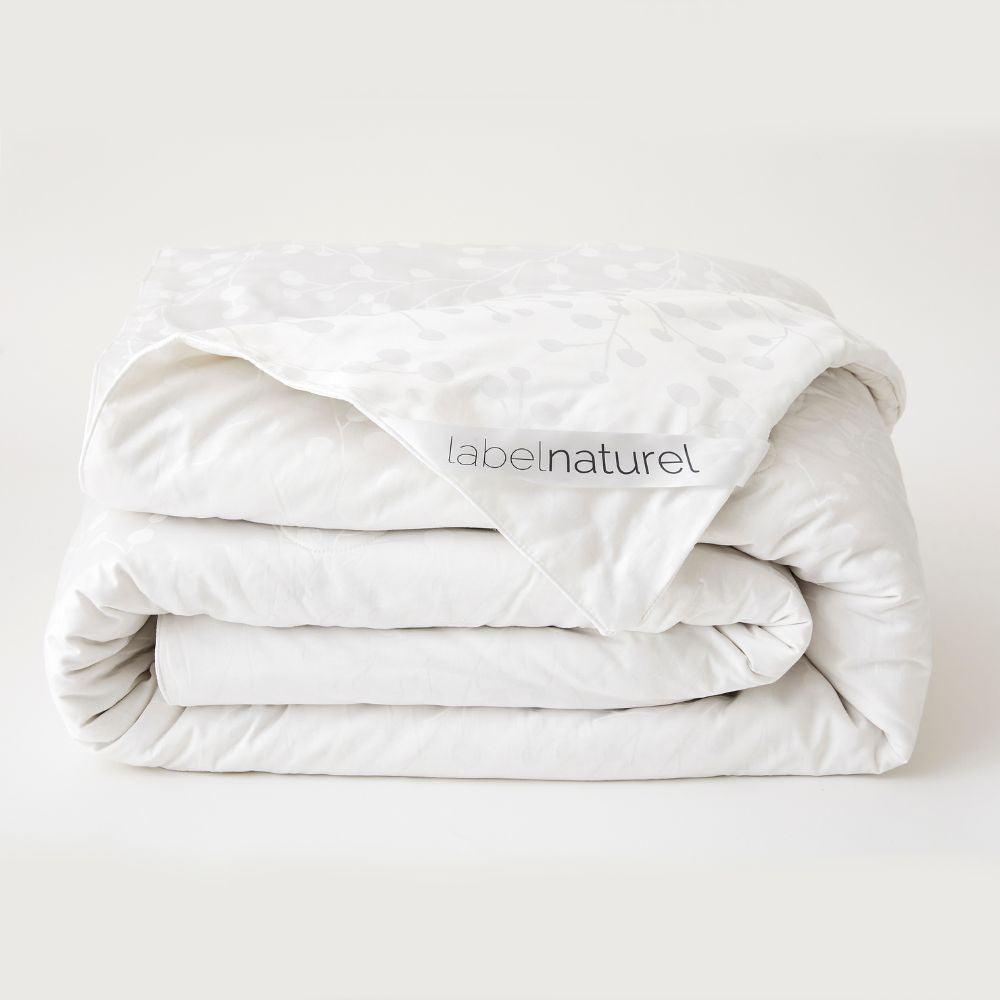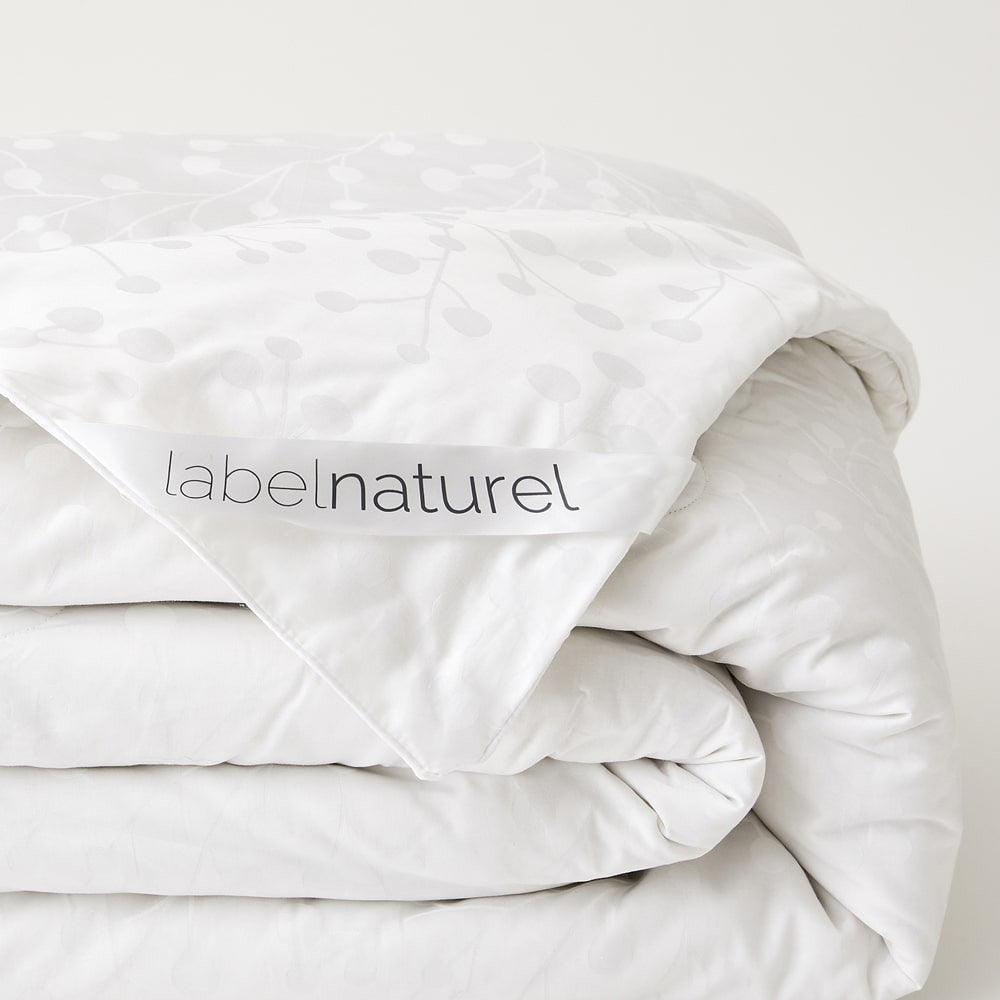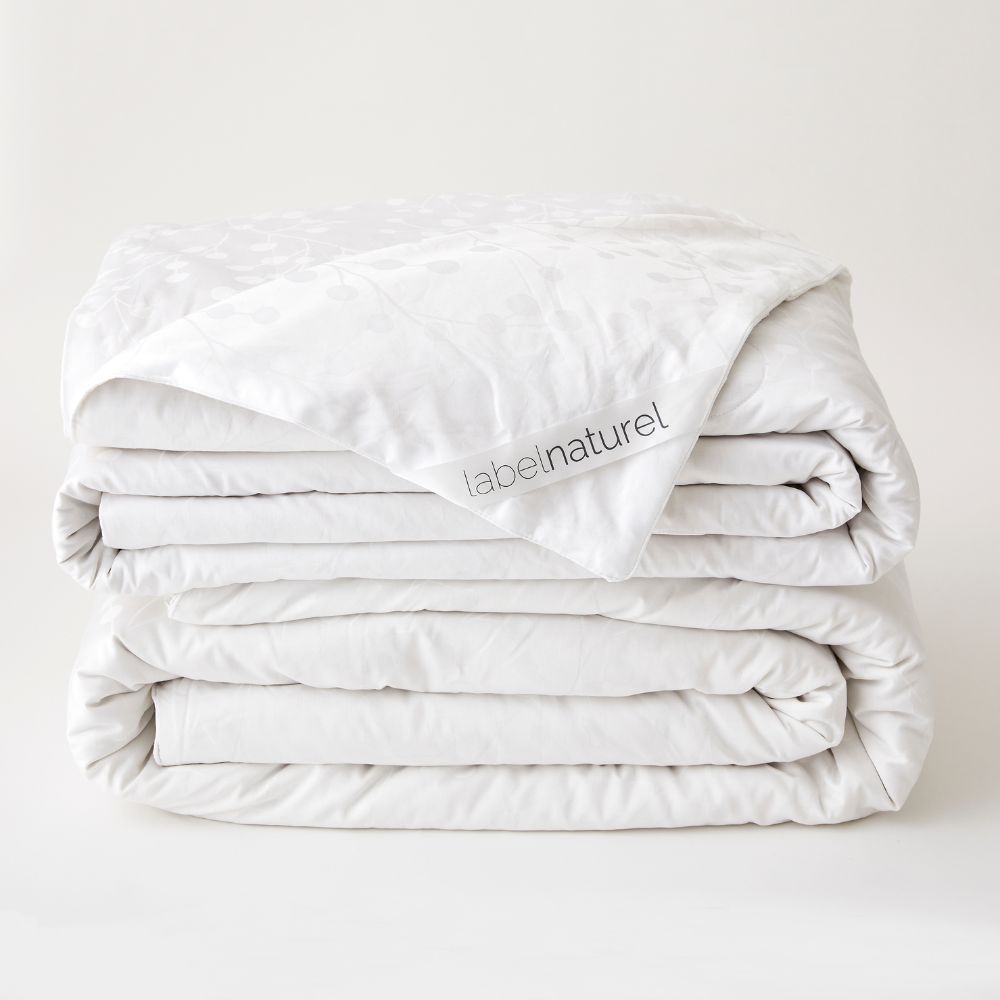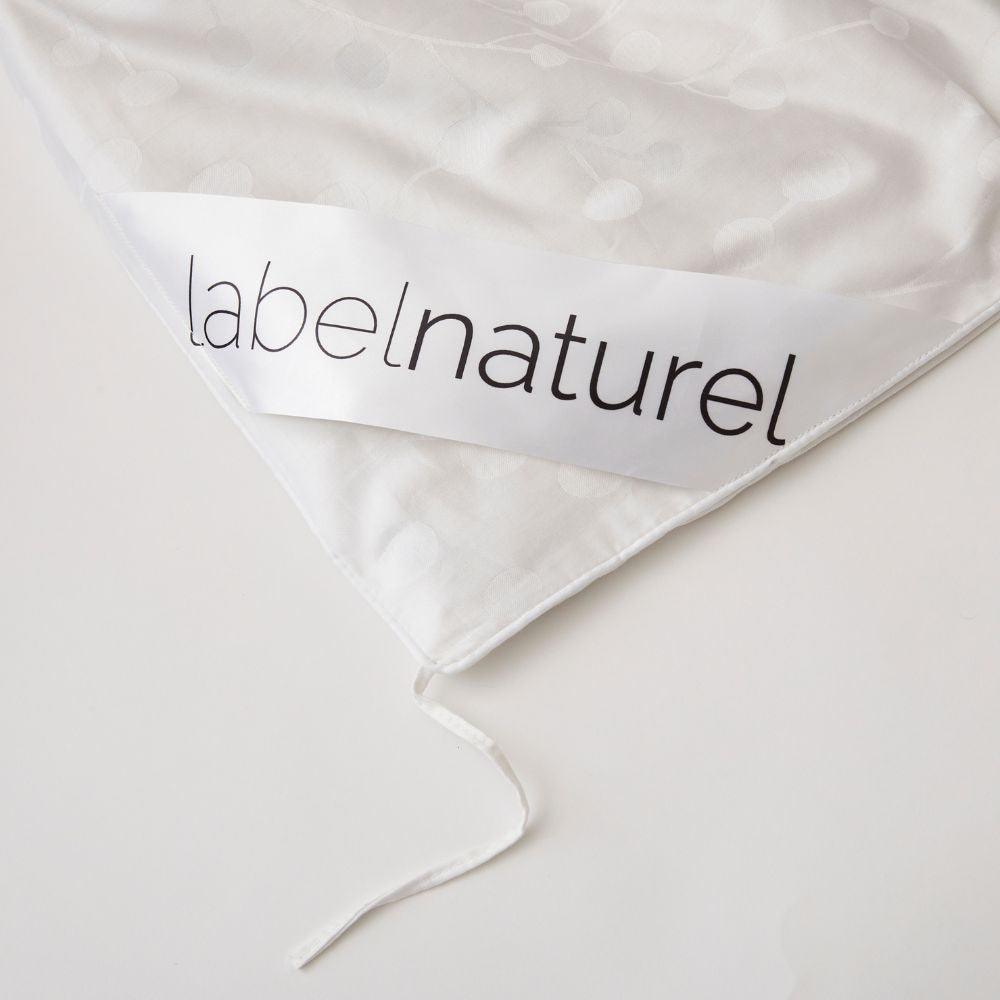8 tips for buying a silk duvet
- 1- Beware of tempting offers
- 2- Choose a filling of grade A long silk fibers
- 3- Manufacture by hand, without topstitching.
- 4- Check for the presence of a zipper
- 5- Ensure absence of toxic products
- 6- Beware of "washable" silk duvets
- 7- The advantages of ties
- 8- The quality of the envelope
1- Beware of tempting offers

2- Choose a filling of grade A long silk fibers

A silk duvet with a grade A filling is much more durable and has a more uniform filling.
3- Manufacturing should be manual and without topstitching

4- Check for zippers
As we've seen, the method of manufacture and the quality of the silk are of prime importance. The best way to know what you're buying is to check it yourself. For example, a zipper allows you to open the duvet and see the filling on one side.
5- Ensure absence of toxic products
A network of international sanitary control laboratories regularly checks our suppliers and issues them with a certificate. This is not a guarantee of quality or an eco-label as you may read here or there. It just means that our products are free from substances undesirable to health and the skin.
6- Beware of "washable" duvets
An increasing number of silk duvets on the market are "washable at 30°C". Once again, this misleading term should be avoided, as after 2 washes with water, a silk duvet will have lost most of its thermal and sanitizing properties, as silk is a fiber that naturally absorbs moisture. This property prevents the development of bacteria and dust mites, and enables the fiber to better regulate temperature. However, when washed at 30°C, the fiber becomes saturated with water, and the detergent clogs the micro-cavities on the surface of the fibers. The trick is to apply a very tight over-stitching, which, as we have already seen, is not recommended for silk duvets. Despite a deteriorated filling on the inside, the duvet still looks reasonable after care. However, it goes without saying that this type of duvet doesn't have a zipper to check for deterioration of the silk filling.
7- The advantage of ties

8- The quality of the cover

To find out more :
Our comparison of silk duvets vs. down duvets


